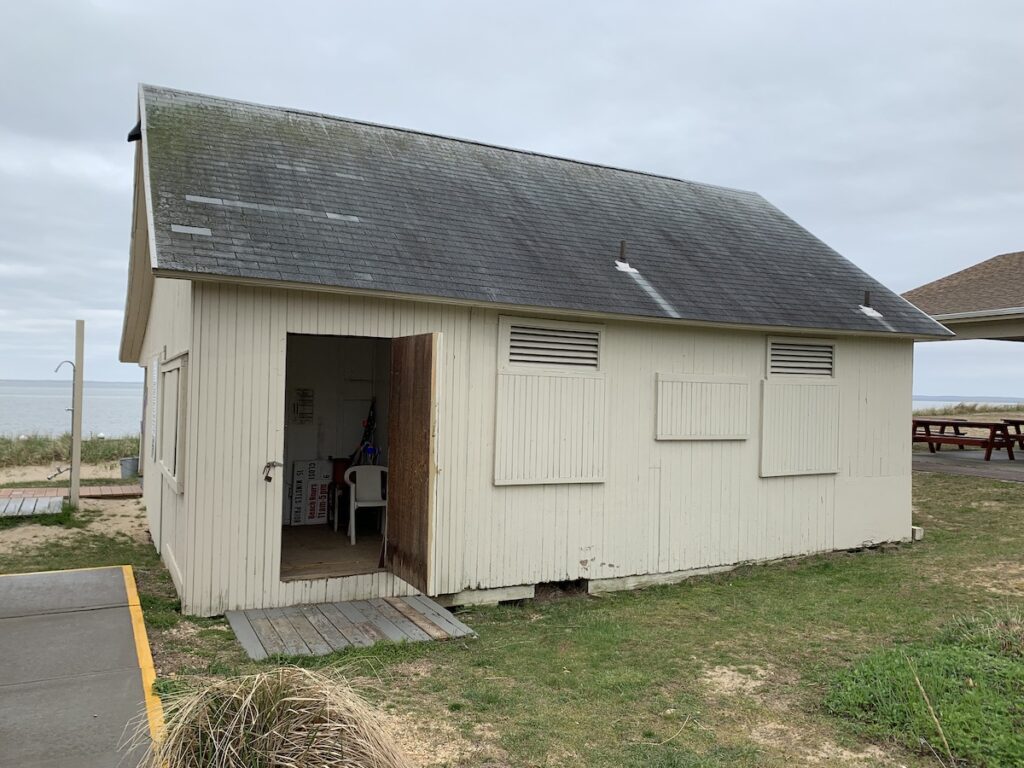Temporary sign coming to Slaves Burying Ground in Orient

Oysterponds Historical Society will place a new sign at the site of a supposed slave burial ground on Narrow River Road in Orient. But they will not put back the sign that had previously been there for decades.
The society’s Board of Trustees has decided to install a new sign, probably within the next two weeks, that will state what the society is doing to determine the actual history of the site, which decades of oral history have said is the burial ground of members of the Tuthill family and their “servants.”
“We have a clear view not to put back the original sign,” said Bob Hanlon, president of the society’s board. “We want to understand what this site is, and we will put up a temporary sign explaining what we are doing.”
Last month, the society removed a marker that had been at the site since the early 1950s. It then formed a working group to research slavery and indentured servitude in Orient and East Marion. The removal met with sharp criticism from a number of Orient residents, many of them from so-called old families whose ancestors first settled in the area in the 1600s.
In a long Guest Spot column published by The Suffolk Times earlier this month, those residents said the sign should be returned to the site, saying the society erred in removing it without consulting the community. The tone of the column was that the old sign reflected accepted local history and should not have been tampered with.
The original marker said the ground around it was the burial spot for members of the Tuthill family and their “servants,” a benign euphemism for enslaved people who could be bought and sold. While criticized by some as a way to erase history, the society said in fact it wanted to dig deeper and try and determine who these individuals were and what became of them.
In an interview, Mr. Hanlon said that marker will not go back — but a picture of the old sign will be part of the temporary new sign.
Mr. Hanlon said records will be thoroughly researched to determine exactly what is at the site. He said ground penetrating radar might be used to determine the number of graves there and whether there is truth to longstanding community rumors that the site might have been a traditional African burial ground.
“Once we learn what we can,” he said, “then a new sign will go up. The old sign will remain in our collection … The argument by some that we are destroying history, covering up history or caving in to [political correctness] is not so. We are simply looking to find out the truth. We are a historical society, not a political arm. Our job is history.
“There were certainly slaves here in the 1600s. We are going about this with a totally open mind, and we will treat this ground with the respect it deserves,” he added.
Some Orient residents who strongly opposed removing the old sign say the temporary one is a poor solution to the problem. In an email Tuesday, a spokesman for the group, Dick Leslie, said: “This is the first we have heard of any specifics about the temporary sign. The Buildings and Grounds Committee of OHS has not been consulted on this. The majority of the new Working Group on this issue has not been consulted. This is not what transparency and community consultation looks like. Who at OHS drafted the language on the new sign? Has it been approved by the Board of Trustees …?
“If the original sign was so offensive why would OHS erect a sign with a photo of the original? Is this a bizarre joke? Since this episode began almost two months ago the cemetery remains an unkempt mess. It is overgrown with brush and trees, the gate unrepaired and unpainted. OHS should concentrate on preserving the eight buildings under its jurisdiction and get out of the cemetery business.”








